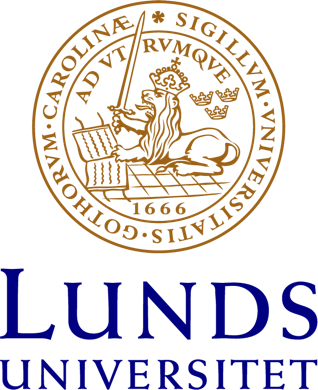Sökresultat
Filtrera
Filtyp
Din sökning på "*" gav 533232 sökträffar
Eleonora Wilhelmina (Ellen) Palmstierna
Demokrati ingen given utgång 1918 : Recension av Per T. Ohlsson 1918. Året då Sverige blev Sverige
Portrait of a Villain : Laban the Arabian in Rabbinic Literature
Introduction : “Formulas of Betrayal”—Traitors, Collaborators and Deserters in Contemporary European Politics of Memory
Basing their study on conceptualizations current in anthropology, history, memory studies, and cultural sociology, Eleonora Narvselius and Gelinada Grinchenko offer a new, complex approach to understanding the violations of loyalty and trust that constitute betrayal, as well as their present-day revisions. Acts of betrayal and their subsequent reinterpretations are viewed through the prism of powe
Silken Braids Under the German Boot : Creating Images of Female Soviet Ostarbeiters as Betrayers and Betrayed
Demonized, domesticated, virtualized : fortification buildings as a case of Prussian heritage in present-day Kaliningrad
The article explores ways in which the nineteenth-century Prussian military architecture has been used and promoted as a part of the local heritage in the Russian exclave of Kaliningrad. Accommodation of the old fortification buildings to tourism and museum work has been publicly discussed since the beginning of the 2000s, but neither local nor federal authorities have proposed a plan to adapt the
Från 1600-talets Jämtland och Härjdalen : Olof Holm, Georg Hansson och Christer Kalin: Böter och fredsköp. Jämtlands och Härjedalens saköreslängder 1601-1645 (2016)
Femtoscopy with identified charged pions in proton-lead collisions at s NN =5.02 TeV with ATLAS
Bose-Einstein correlations between identified charged pions are measured for p+Pb collisions at sNN=5.02TeV using data recorded by the ATLAS detector at the CERN Large Hadron Collider corresponding to a total integrated luminosity of 28nb-1. Pions are identified using ionization energy loss measured in the pixel detector. Two-particle correlation functions and the extracted source radii are presen
The proper object of non-doxastic religion : why traditional religion is to be preferred over Schellenberg's simple ultimism
Taking for granted the view that belief-less, ‘non-doxastic’, engagement with religion is possible, this article discusses the proper object of such religiosity. Its focus is the claim of J. L. Schellenberg that non-doxastic religion should be directed at ’simple ultimism’. I argue that ‘simple ultimism’ is too abstract to allow for alignment with religious reality. Traditional religion is a bette
Pool boiling heat transfer of nanostructured surfaces by electrostatic and electrophoretic deposition methods
Presentation
How older people as pedestrians perceive the outdoor environment – methodological issues derived from studies in two European countries
This paper has re-analysed and compared data between three studies conducted in the United Kingdom and in Sweden (the OPUS ‘Older People's Use of Unfamiliar Space’ study in the United Kingdom and the Swedish studies ‘Let's Go for a Walk’ and ‘Walking in Old Age’) to provide a comprehensive account of the issues facing older people in the outdoor environment. All three studies draw on the ‘fit’ bet
Pale and dark morphs of tawny owls show different patterns of telomere dynamics in relation to disease status
Parasites are expected to exert long-term costs on host fecundity and longevity. Understanding the consequences of heritable polymorphic variation in disease defence in wild populations is essential in order to predict evolutionary responses to changes in disease risk. Telomeres have been found to shorten faster in malaria-diseased individuals compared with healthy ones with negative effects on lo
A predictive focus of gain modulation encodes target trajectories in insect vision
When a human catches a ball, they estimate future target location based on the current trajectory. How animals, small and large, encode such predictive processes at the single neuron level is unknown. Here we describe small target-selective neurons in predatory dragonflies that exhibit localized enhanced sensitivity for targets displaced to new locations just ahead of the prior path, with suppress
Evolution : An Irresistibly Clear View of Land
Visually guided predation is range-limited in water, but works over long distances on land. This may have driven our last aquatic ancestors to evolve large eyes on the top of their head for spotting crunchy meals on ancient riverbanks.
Phototransduction in fan worm radiolar eyes
Fan worms (Annelida: Sabellidae) are sessile polychaetes that spend their adult lives in tubes and project their fans, composed of radiolar tentacles, up into the water column for respiration and filter feeding. To protect the fan from predation, many species have evolved unique compound eyes on the radioles that function as shadow or motion detectors, eliciting a rapid withdrawal response in reac
George Logie’s “Success”: Entrepreneurial partnership, the practice of international maritime law, and the road to the first Swedish consulate in the Ottoman world, 1725-1731
An autonomous robot inspired by insect neurophysiology pursues moving features in natural environments
Objective. Many computer vision and robotic applications require the implementation of robust and efficient target-tracking algorithms on a moving platform. However, deployment of a real-time system is challenging, even with the computational power of modern hardware. Lightweight and low-powered flying insects, such as dragonflies, track prey or conspecifics within cluttered natural environments,
N. A. M. Rodger; J. Ross Dancy; Benjamin Darnell; Evan Wilson, Strategy and the sea: Essays in Honour of John B. Hattendorf (Woodbridge, Suffolk, UK; Rochester, NY, USA: The Boydell Press, 2016). xi, 303 s, inb, ill.
Role of Correlations in the Collective Behavior of Microswimmer Suspensions
In this Letter, we study the collective behavior of a large number of self-propelled microswimmers immersed in a fluid. Using unprecedentedly large-scale lattice Boltzmann simulations, we reproduce the transition to bacterial turbulence. We show that, even well below the transition, swimmers move in a correlated fashion that cannot be described by a mean-field approach. We develop a novel kinetic
